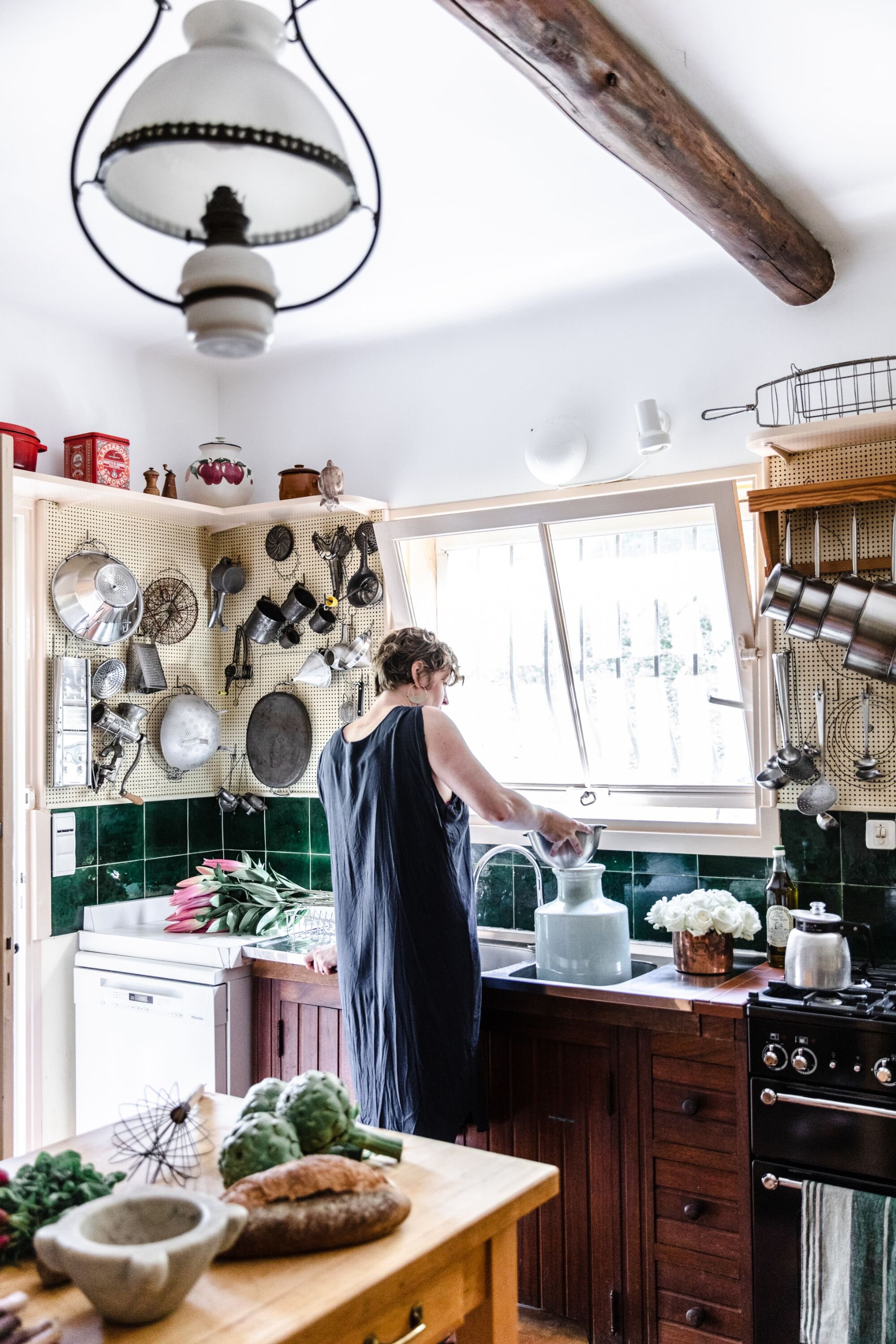A Brief History of The Iconic Kitchen Pegboard
If you are familiar with Julia Child and her world-famous Provencal kitchen, then you are probably well aware of the pegboard wall that is proudly displayed in the space. This deeply functional integration allowed her to expand her kitchen storage vertically, and have some of her most treasured items readily available for continual use. (After all, we hear she spent a lot of time in the kitchen.)
But, where did the idea for this previously unconventional way to organize items come from? E. Dehillerin is the premiere kitchenware shop in Paris, in the deuxieme arrondissement, and has been since 1820. To chefs and historians, this storefront is an absolute must – a holy grail in the cooking community. Its walls and ceilings are lined with incredible, top-of-the-line copper pans and other kitchen utensils, many like the interesting ones you have peeped on the La Peetch walls. In French, this is referred to as “batterie de cuisine” or a set of utensils used for preparing a meal.
Just like the shop owners, Julia was always proud of each item she accrued inside her kitchen walls, and the pegboard display allows you to fully appreciate your purchases regularly, instead of hiding them away in cabinets and pantries. It also allows you to visualize what inventory is clean and ready to go when you are preparing your mise en place for a new meal.
Not only did she set up her space to be visually appealing, but the tools were arranged in ways that made them easily accessible based on the frequency of their use. She hung copper pots and pans in size order, while Paul and his twin brother outlined their shapes in paint like dead bodies at crime scenes. As an extra organizational touch, she added polaroids of each item to their outlines or areas of the pegboard to make cleaning up her messes and putting everything away so much more efficient than it could have been – and certainly had been previously.
The pegboard panels she implemented into her kitchen in Boston went to the Smithsonian, Copia food and wine museum in Napa, and a private buyer. But her original kitchen setup at La Pitchoune has been maintained in pretty pristine condition if we do say so ourselves.
Come see us to witness those original utensil outlines in person. There's something magical about creating in the kitchen that Julia built and countless cooks, chefs, and cookbook authors have created in as well.




